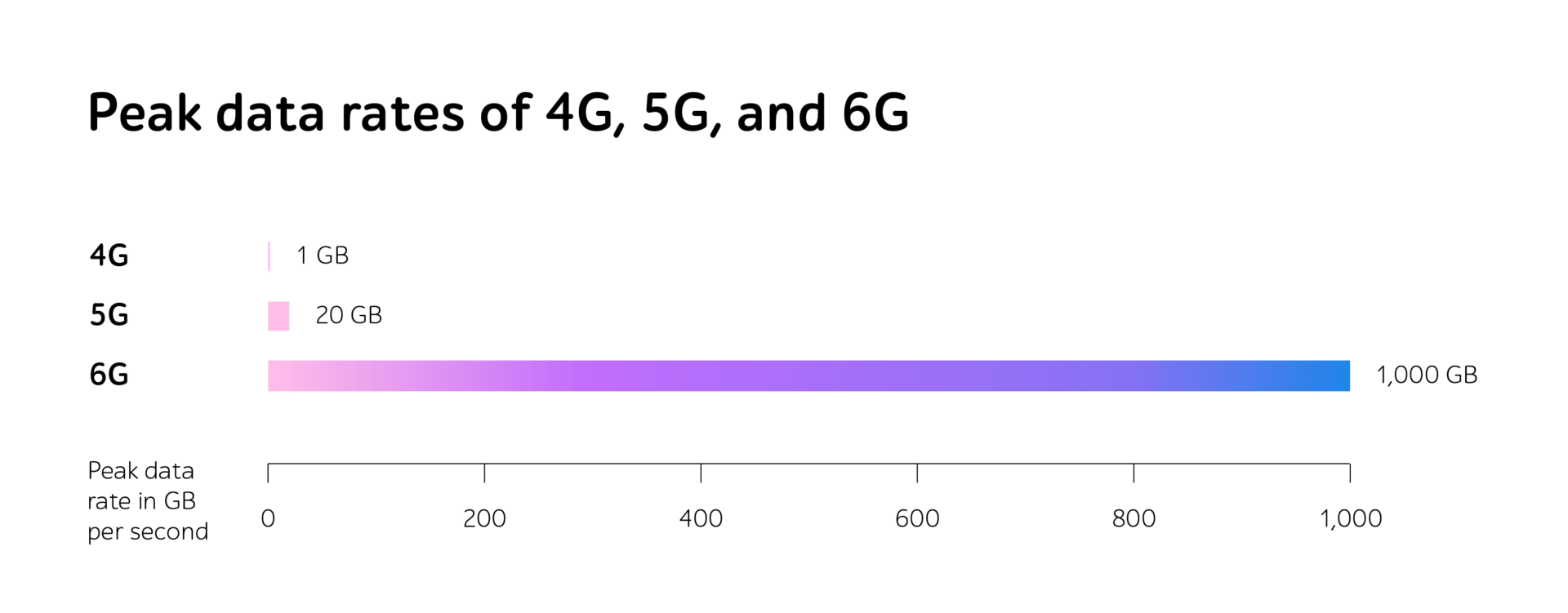
4 telecom trends for 2023 and how to painlessly implement them with QA
How can telecom companies maintain market leadership in 2023? Adopting novel tech trends can be of help but it is a tricky process. So, how can businesses simplify it while achieving the desired outcomes? In the article, find out the 4 emerging telecom trends and 6 testing types that are pivotal to implementing them.
4 telecom trends to adopt in 2023: make your software unrivaled
Let’s see what trends will shape the future of the telecom industry.
Trend #1. No need to wait with 5G and 6G
Mobile ecosystems are constantly evolving, however, in today’s world, companies are in search of methods to make wireless communication even faster with higher capacity and frequency and lower latency. Even though 5G is still trending, many organizations are looking ahead and gradually introducing 6G, providing better throughput, higher data rates and reliability as well as unrivaled immersive experience when it comes to AR/VR.
Consider this: if 5G offered the speed of 1 GB per second (or with peak data rates of 20 GB), 6G will reach one TB, which is 8,000 times faster than 5G.

Source: Statista
Trend #2. Cloud introduction or amplifying the power of your digital ecosystem
Have you noticed the number of apps migrating to the cloud? Of course, business realizes that their target audience wants to access the software from anywhere. So, telecom companies are also looking for the ways to provide more flexible and scalable solutions with high computing power over the cloud. This is because the growth of such devices as IoT, AI, and ML has driven the demand for more powerful computing capabilities. Here, cloud computing assists in improving program resilience and efficiency, accelerating the digitalization processes, and easily transforming all flowing procedures to meet customers’ needs.
Trend #3. Network-as-a-service (NaaS) or having the network infrastructure without building it from scratch
Since building, deploying, and maintaining routers, WAN optimizers, and other network elements is a cumbersome process, organizations rely heavily on NaaS. NaaS removes the need to invest in network hardware and infrastructure, helping businesses avoid budget overruns.
As user traffic often varies and can exceed the expected limit, NaaS ensures that your network runs smoothly even during high loads and prevents system disruptions.
Trend #4. Edge computing or shortened response time
According to Statista, the edge computing market will reach $250.6 billion by 2024. By storing, processing, and analyzing data locally, edge computing provides higher performance, bandwidth optimization, low latency, refined security, and soundness for IoT, AR/VR, industry 4.0, and other devices possessing sensitive controllers.
It will allow cutting down on exploitation expenditure by reducing large volumes of data previously kept on the cloud.
How to take care of software quality when implementing telecom trends?
It’s critical to ensure a high software level. To achieve this, we see companies applying QA aimed at checking various system aspects and eliminating bugs in them.
#1. OSS/BSS testing
Integrating a myriad of devices, like servers, cloud-hosted machines, tablets, phones, etc., and handling large volumes of transactions, OSS/BSS systems should be able to function correctly around the clock. This allows verifying 3 key aspects of OSS/BSS software:
- Performance. The number of flowing operations and users skyrockets from time to time, so for the software, it’s mission-critical to withstand all kinds of loads: from regular to peak ones.
- Security. These systems are vulnerable to unauthorized intrusion, which often results in the leakage of clients’ and company’s private data.
- Functionality. Can subscribers create, modify, and delete accounts? Can they easily perform all necessary actions, such as tracking and paying invoices? Functional verification assists in confirming that the OSS/BSS solutions comply with the stated requirements and simplify user interaction with the system.
#2. Migration testing
Just imagine this: you have a billing solution containing a slight calculation error. Sure, it’ll cause user dissatisfaction and 100, 1,000, or more customer support calls. Migration should be smooth without affecting the routine actions of subscribers.
The transformation of the telecom product, such as receiving new features, always requires the transition of a large amount of data from the source system to the target one. Migration tests help make this process seamless and ensure required data integrity while preventing its losses.
#3. Integration testing
Telecom software products have a complex structure and comprise a multitude of modules. Just look: one IT solution may include billing, customer support, and self-service systems as well as an integration platform.
But how to make sure that all of them seamlessly correlate with each other? Integration testing is of help in such situations that allow timely identify integration discrepancies in the app and ensure the proper functioning of interrelated modules.
Based on the entire system and its individual parts readiness and the desired deadline, companies may employ different integration testing strategies. For example, the big bang one is aimed at the systems in which all components are already interconnected to assess the integrity of the whole product. If the program isn’t entirely ready, it is better to start with low-level blocks by applying the bottom-up approach.
#4. Performance testing
When you need to combine several systems into a single one or the number of subscribers of your telecom software multiplies, putting performance testing at the core of a business strategy is a must-have.
So, what types of checks are helpful?
- Load testing — to check that the system handles the required load.
- Stress testing — to exclude program crashes if the number of users expands.
- Volume testing — to make sure that the increased amount of data stored won’t cause software breakdown.
- Scalability testing — to analyze how the telecom product responds to changes in architecture, the number of simultaneous subscribers, and generated requests.
#5. Cybersecurity testing
According to Deloitte, in 2020, cybercriminals stole the sensitive data of more than 500,000 people across the globe from video conferencing and sold it on the dark web. Quite an alarming case, agree? The most common attacks in the telecom sector, where 45% of all are cloud-based, include DNS (79% of companies suffered it in 2020), SS7, DDoS, and others, which ultimately lead to downtime, damaged reputation, and high operational expenditure needed to restore the software.
Well, to prevent breaches within telecom systems, companies make use of cybersecurity tests — conduct a vulnerability assessment, static code analysis, penetration testing, social engineering activities, and more — providing a safe experience for subscribers.
#6. Test automation
Testing telecom software may be time-consuming, especially if done manually. Adopting test automation is a logical choice to reduce test cycles, improve test coverage, and decrease QA costs as well as increase ROI from 37% to 50%, as stated in the World Quality Report.
Closing thought
In 2023, telecom companies may rely on 4 topical trends ― 6G, cloud introduction, NaaS, and edge computing ― to continue providing end users with a consummate digital experience.
And to take exceptional care of telecom software quality, organizations just call for QA and verify the following aspects: OSS/BSS, migration, integration, performance, and cybersecurity, as well as introduce test automation to accelerate the testing process.
In case you don’t plan to boost your telecom product quality yourself and need professional QA assistance, reach out to a1qa’s professionals.








